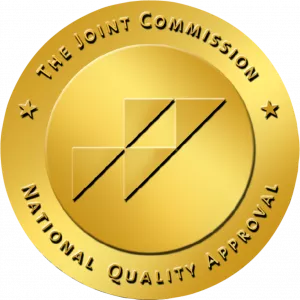MDMA withdrawal can be challenging, as the comedown from ecstasy or molly often brings physical, emotional, and cognitive symptoms.
At Avenues Recovery Center, we believe in providing clear, compassionate, and professional support for those navigating the difficult journey of drug withdrawal. Let’s explore the topic of MDMA withdrawal, offer insights into its symptoms, timeline, and effective strategies for managing it. Whether you're seeking help for yourself or a loved one, understanding the nuances of ecstasy withdrawal is a crucial step towards recovery and lasting well-being.
Key Takeaways
|
What Is MDMA?
MDMA (3,4-methylenedioxymethamphetamine) is a synthetic drug that alters mood and perception. It’s most widely known by its street names, ecstasy and molly. "Ecstasy" refers to tablets or pills that may contain MDMA mixed with other substances, while "molly" is usually marketed as a purer crystalline or powdered form of MDMA, though in practice it can still be cut with other drugs.
MDMA is chemically similar to both stimulants and hallucinogens, producing feelings of increased energy, pleasure, emotional warmth, and distorted sensory and time perception. MDMA was first developed in the early 20th century as a potential pharmaceutical agent, and it gained popularity in the 1970s and 1980s as a recreational drug, especially within the nightclub and electronic dance party scenes.
Despite its reputation for enhancing social interaction and empathy, MDMA use carries significant risks, including the potential for addiction and extremely adverse health effects. Understanding these effects is essential to addressing MDMA withdrawal symptoms effectively.
What Is MDMA Withdrawal?
MDMA withdrawal is the set of physical, emotional, and cognitive symptoms that occur after someone stops using MDMA. These symptoms often emerge as the drug leaves the system and can range from uncomfortable to severely disruptive.
While MDMA is often sought after for its euphoric and empathogenic effects, the comedown and withdrawal period can be uncomfortable at best and quite painful at worst. Ecstasy withdrawal symptoms can be physically and emotionally taxing, leading to a range of issues - from fatigue and depression to anxiety and cognitive difficulties. These MDMA withdrawal symptoms can significantly hinder daily functioning and quality of life, making it difficult for people to maintain their responsibilities and relationships. The unpredictable and sometimes severe nature of MDMA withdrawal makes it even more important to understand and address it effectively. Without proper support and treatment, people may struggle to achieve lasting recovery from ecstasy abuse.
MDMA Withdrawal Symptoms
MDMA withdrawal symptoms can vary in intensity and duration. They typically include:
- Fatigue: Extreme tiredness and lack of energy
- Depression: A significant drop in mood, often accompanied by feelings of hopelessness and sadness
- Anxiety: Heightened levels of anxiety and nervousness, sometimes leading to panic attacks
- Sleep disturbances: Insomnia, disrupted sleep patterns, or nightmares.
- Cognitive difficulties: Problems with concentration, memory, and decision-making, often referred to as "brain fog."
- Appetite changes: Some people may experience a loss of appetite, while others might have increased cravings for certain foods, especially sweets.
- Irritability: Increased irritability and agitation can affect mood and social interactions.
- Muscle tension and pain: Physical discomfort, including muscle aches and jaw clenching
- Cravings: Strong urges to use ecstasy again
- Paranoia: Extreme, irrational suspicion and mistrust of others
- Restlessness: A general sense of jumpiness and inability to stay still
- Nausea: Feelings of nausea or gastrointestinal discomfort (less common)
Factors That Affect MDMA Withdrawal
Ecstasy withdrawal is influenced by a wide range of factors, making each individual's experience unique.
- Frequency and duration of use are the main things that affect MDMA withdrawal symptoms; those who have used MDMA heavily or for extended periods understandably experience more severe withdrawal symptoms.
- Dosage also plays a big role, with higher doses leading to more intense withdrawal effects.
- Individual differences, including overall health, age, and genetic predisposition, can impact the severity and duration of withdrawal.
- The form of MDMA used makes it different. If taken as ecstasy, withdrawal may be more unpredictable or severe since pills often contain other substances in addition to MDMA. Molly, on the other hand, is marketed as purer MDMA, so withdrawal is usually more consistent but can still be intense.
- Co-occurring mental health disorders, such as anxiety or depression, can exacerbate symptoms, making the withdrawal process more challenging.
- Polydrug use, or the use of multiple substances, can complicate MDMA addiction withdrawal further because the interactions between different drugs can create a more complex withdrawal profile.
- Environmental factors, including the presence of a supportive network and access to medical care, also significantly affect the withdrawal experience.
How Long Does MDMA Withdrawal Last?
MDMA’s withdrawal timeline can vary depending on the individual and the extent of their usage, but generally follows a pattern from acute symptoms to gradual improvement:
|
MDMA Withdrawal Time Frame |
Withdrawal Symptoms |
Intensity |
|
Initial Crash (First 24-72 Hours ) |
Fatigue, depression, irritability, and anxiety. Some individuals may also experience headaches and muscle aches. |
Symptoms can be intense during this period, as the body begins to adjust to the absence of the drug. |
|
Peak Withdrawal (Days 3-7) |
Depression and anxiety remain prominent, often accompanied by sleep disturbances, such as insomnia or hypersomnia (excessive sleep). Cravings for the drug can be very strong, and cognitive difficulties, like concentration issues and memory problems, are common. |
This is often the most challenging phase, requiring significant support to manage symptoms effectively. |
|
Initial Improvement (Week 2) |
Fatigue and mood swings can continue, though they may lessen in intensity. Sleep patterns may start to normalize, but some people still experience insomnia or restless sleep. Appetite and digestive issues may persist. Some symptoms begin to subside, but emotional and psychological challenges continue. |
Symptoms generally start to decrease, but the individual may still struggle with significant psychological distress. |
|
Gradual Recovery (Weeks 3-4) |
Emotional stability starts to return, with reduced anxiety and depression. Cognitive functions begin to improve, though some residual effects may linger. Cravings can still occur but are usually less intense. |
While most physical symptoms subside, psychological symptoms can continue, albeit at a reduced intensity. |
|
Long-Term Adjustment (Month 2 and beyond) |
Occasional mood swings and mild depression or anxiety might persist. Cognitive functions continue to improve. Cravings for ecstasy can still occur sporadically, especially in response to triggers. |
By this stage, most individuals experience a significant reduction in symptoms, though complete recovery can take longer for some. |
Long-Term Effects of MDMA Withdrawal
Although the breakdown above gives a clear picture of what a typical MDMA withdrawal timeline looks like, some factors can affect the length of withdrawal and success in staying sober long-term.
- Post-Acute Withdrawal Syndrome (PAWS): Some individuals may experience prolonged withdrawal symptoms, known as PAWS. These can include ongoing emotional instability, anxiety, depression, and cognitive difficulties, lasting several months or even longer.
- Support and Recovery: Continuous support from healthcare professionals, family, peer groups, and mental health counselors is crucial in managing long-term recovery and preventing relapse.
What Is MDMA Detox?
MDMA detox is the first stage of recovery, when the body works to eliminate the drug and its toxins, trying to stabilize itself physically and mentally. This process can be challenging because of the array of withdrawal symptoms that come up as the effects of the drug wear off. During detox, people may experience intense cravings, emotional instability, and physical discomfort, making medical supervision and supportive care crucial. A medically supervised detox program ensures that patients receive appropriate medical interventions to manage symptoms, reduce discomfort, and prevent complications. Also, the supportive environment of a detox program provides emotional and psychological support, laying a strong foundation for the subsequent stages of recovery and long-term sobriety.
MDMA Withdrawal Treatment at Avenues Recovery
Effective MDMA withdrawal treatment involves a comprehensive approach that addresses both the physical and psychological aspects of withdrawal. At Avenues Recovery Center, we offer personalized treatment plans tailored to each individual's unique needs, ensuring they receive the highest quality care. Our multidisciplinary team provides medical supervision, therapeutic support, and holistic therapies to manage symptoms, alleviate discomfort, and promote overall well-being. We emphasize a compassionate, patient-centered approach, recognizing that each person's journey to recovery is different.
If you or a loved one is struggling with ecstasy addiction or withdrawal, reach out to Avenues Recovery Center today. Our dedicated professionals are here to support you every step of the way, helping you achieve lasting recovery and a healthier, happier life.
FAQs About MDMA Withdrawal
Can you speed up MDMA withdrawal?
MDMA withdrawal can’t be sped up; the body needs time to recover. But good sleep, hydration, nutrition, and professional support can make the process easier.
What does MDMA withdrawal feel like?
Most people experience fatigue, low mood, anxiety, irritability, and trouble sleeping or concentrating. Symptoms can range from mild to severe.
How long does MDMA withdrawal last?
Symptoms often begin within hours, peak over the first few days, and may last one to two weeks. Some effects, like depression or sleep problems, can linger longer.
Is MDMA withdrawal dangerous?
While it isn’t usually life-threatening, MDMA withdrawal can be mentally and emotionally difficult. Professional help is recommended to manage symptoms safely.



